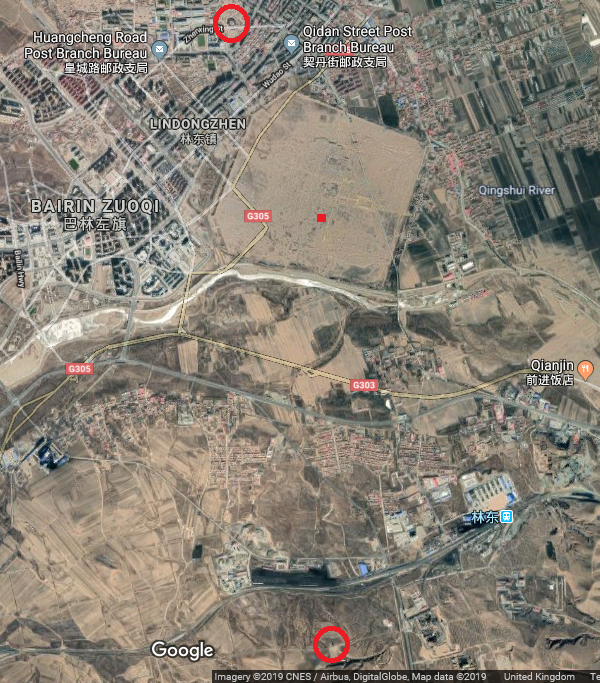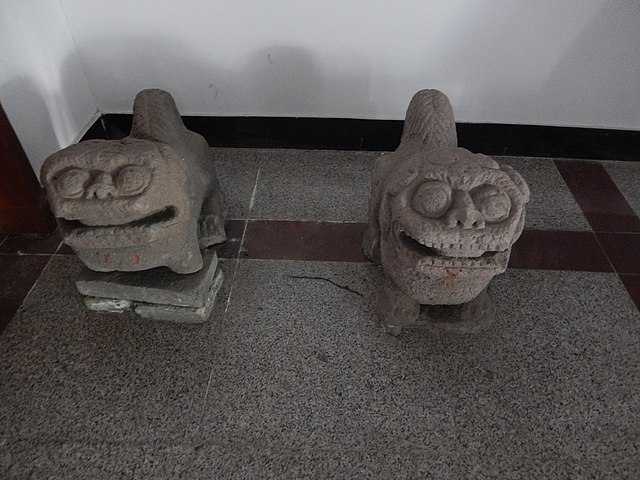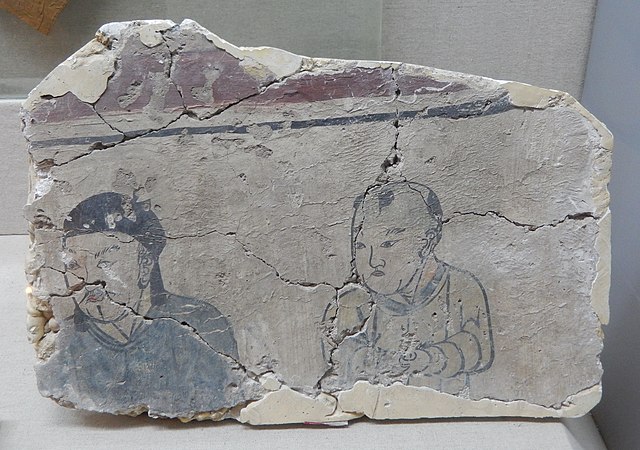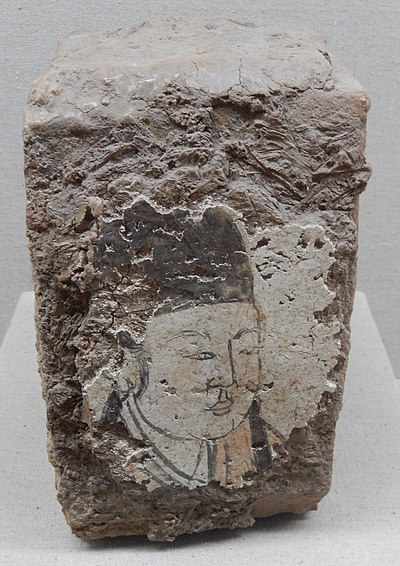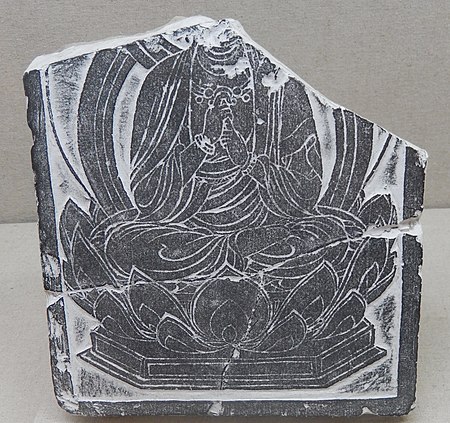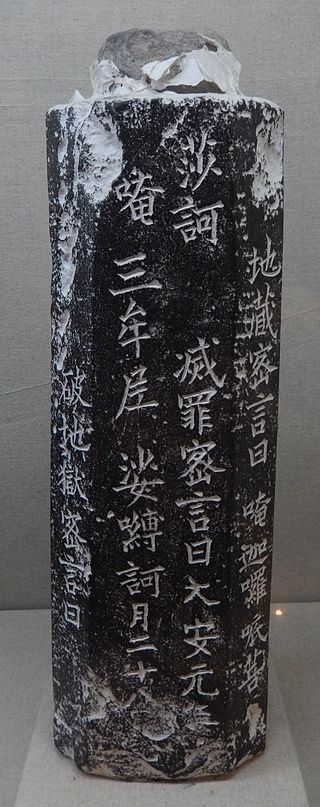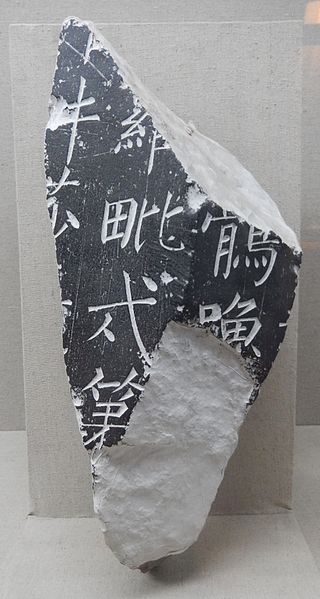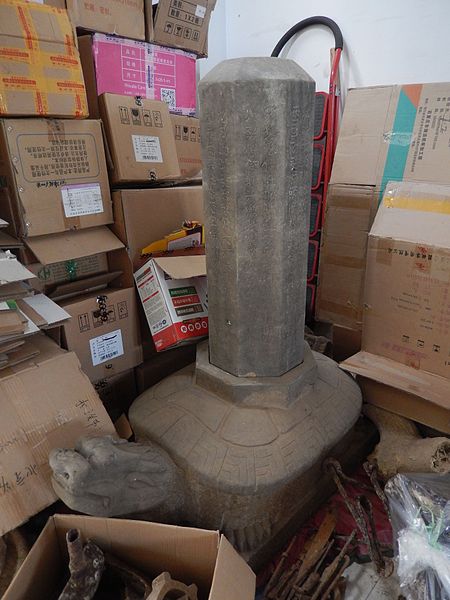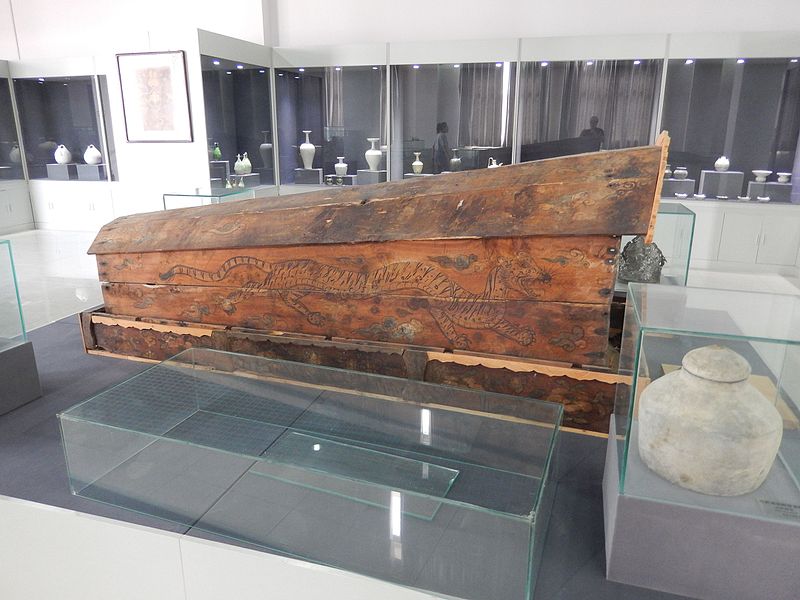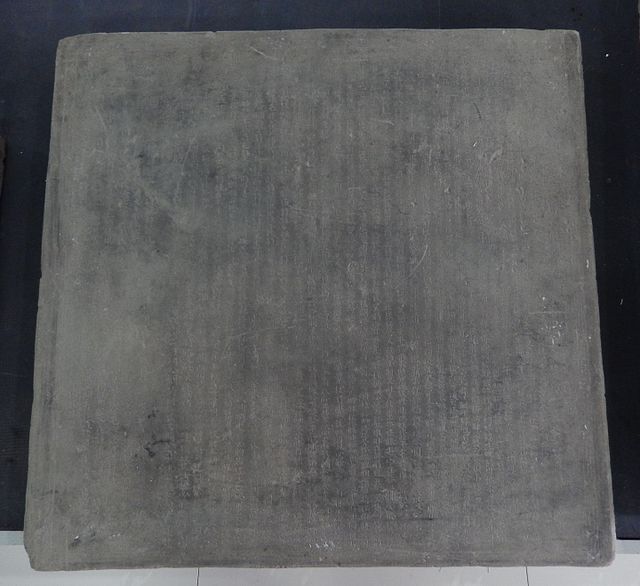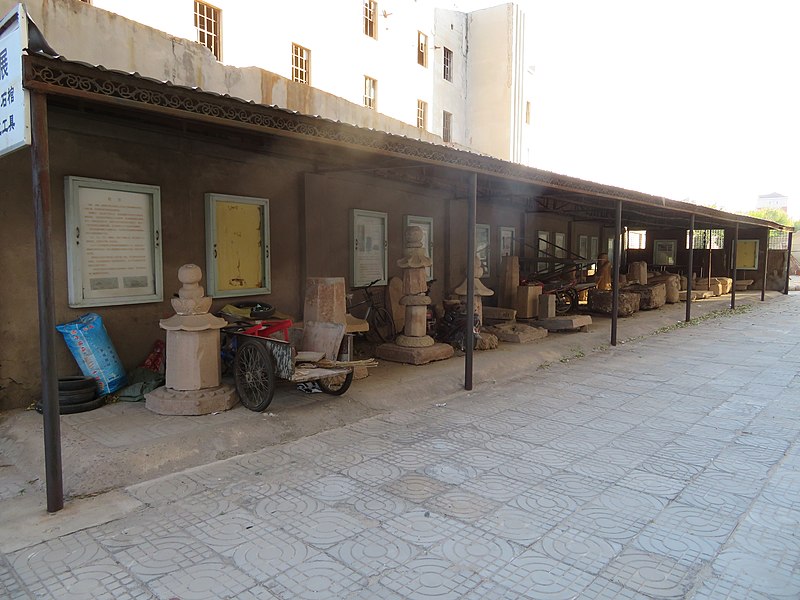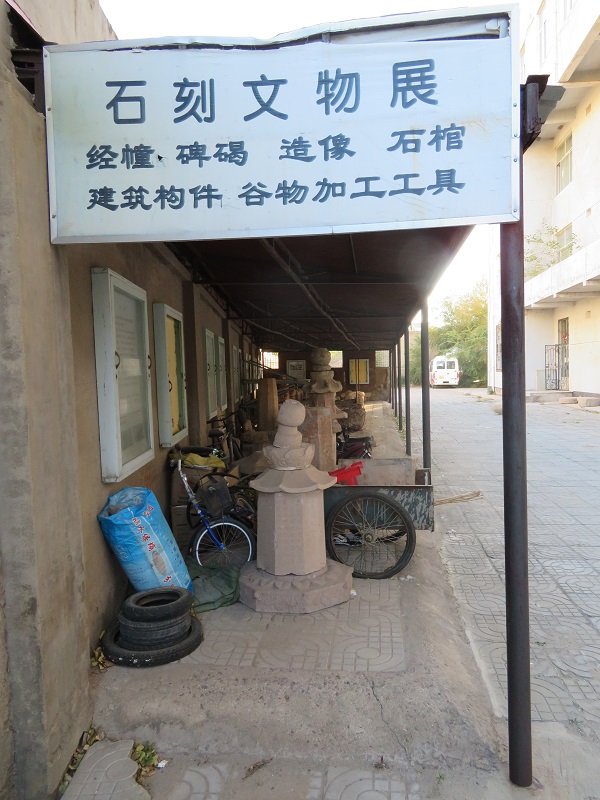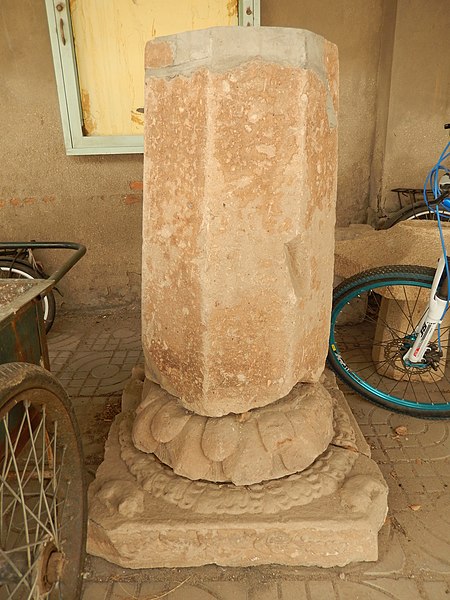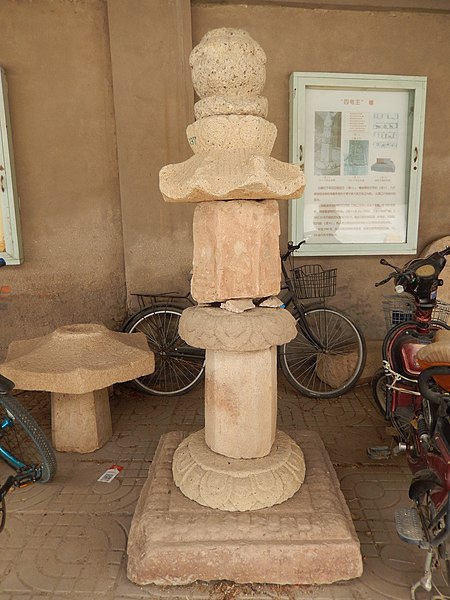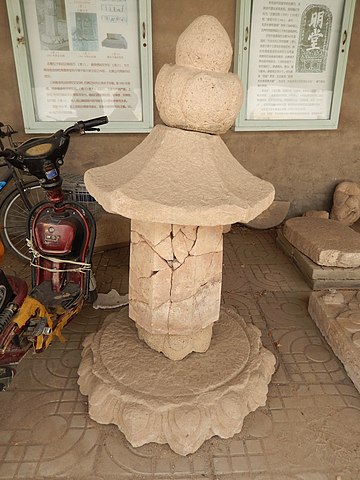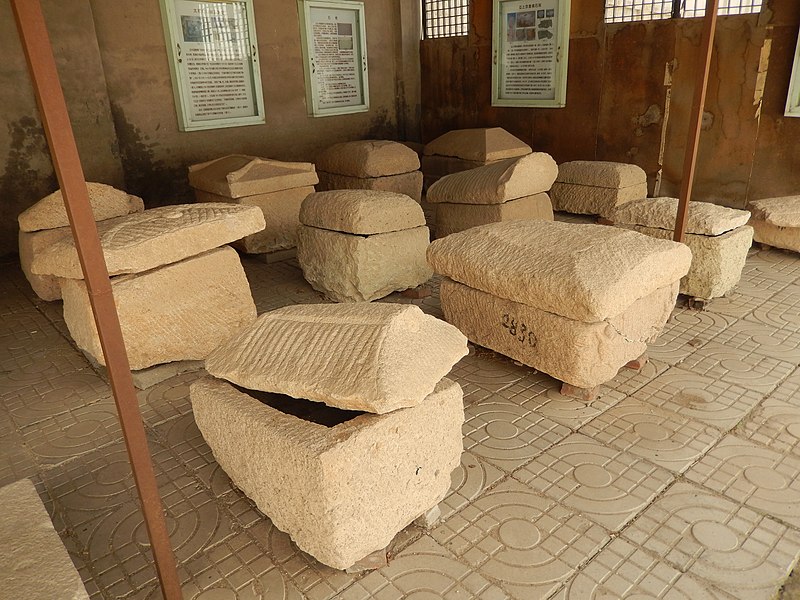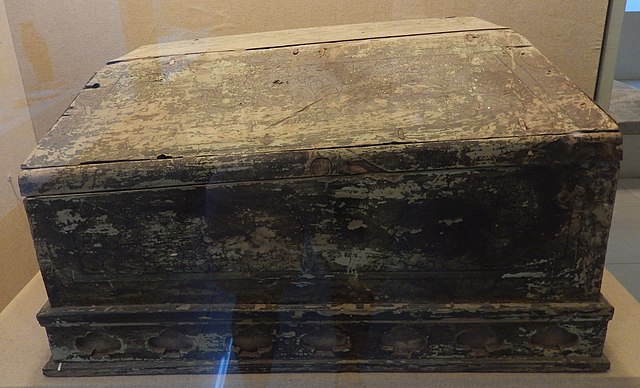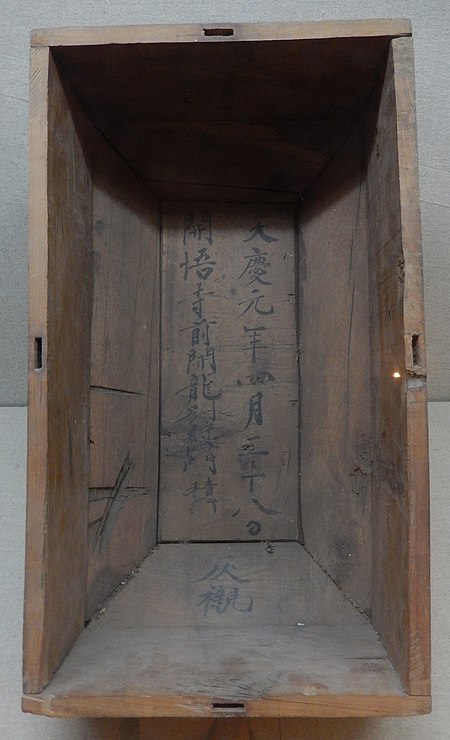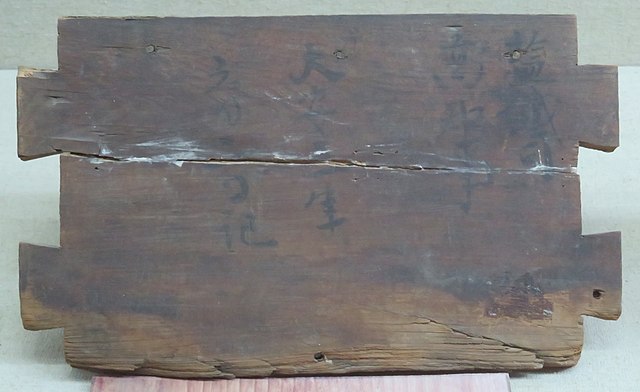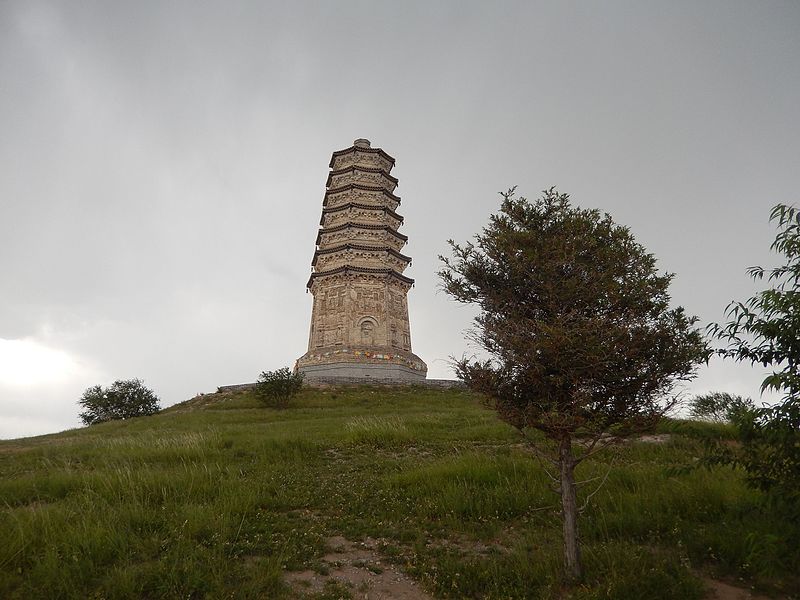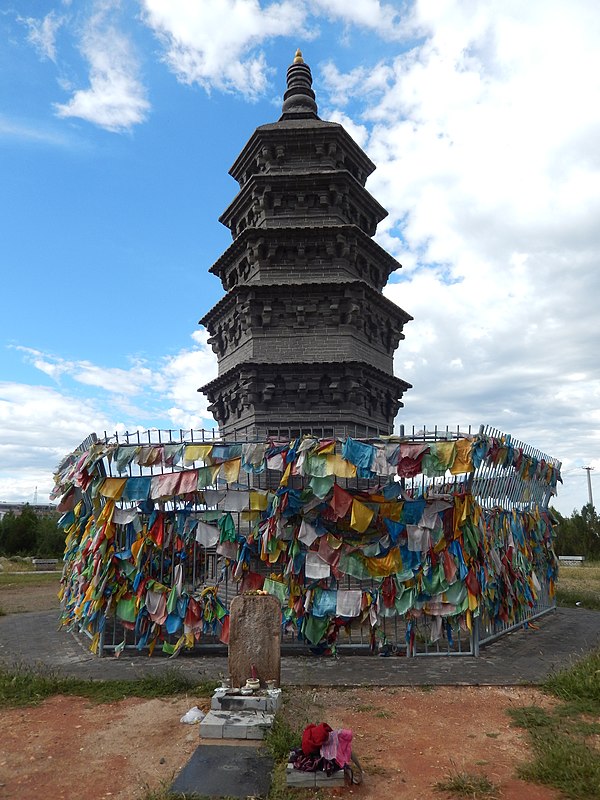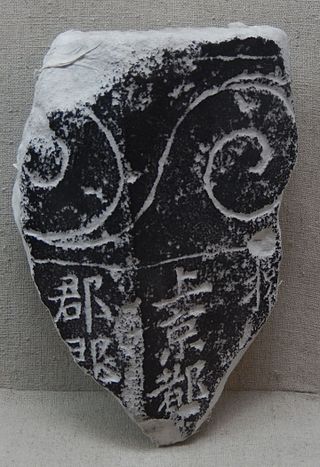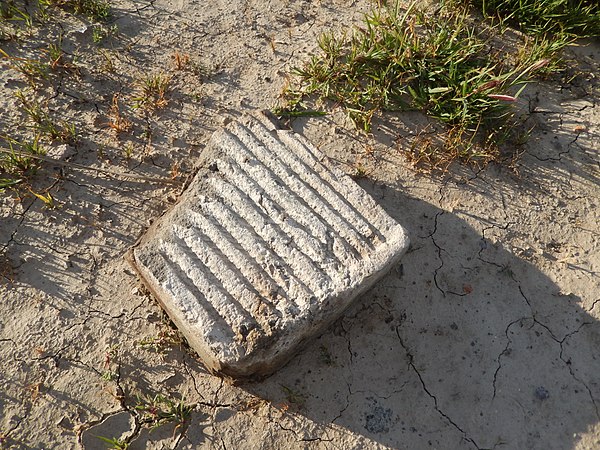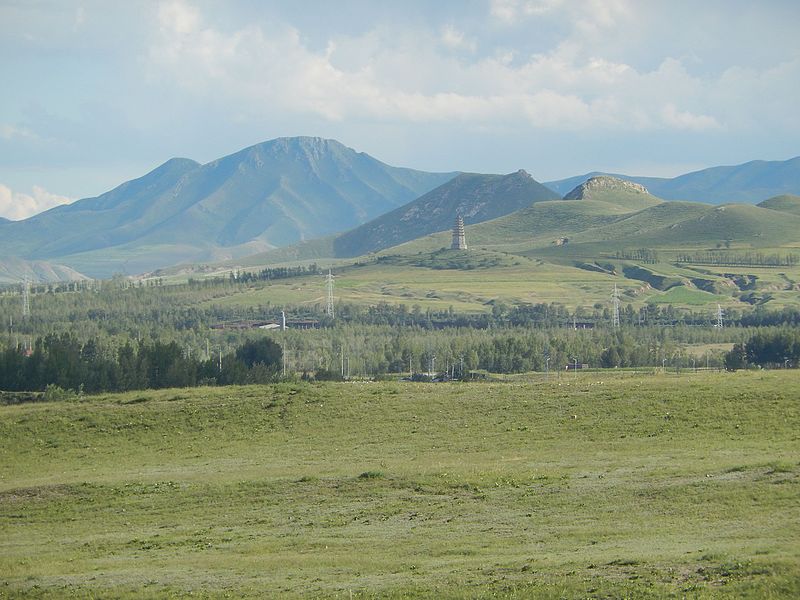Diary of a Rambling Antiquarian
Saturday, 27 August 2016
Liao Superior Capital and Pagodas
Two days ago we were at the Tangut fortress city of Kharakhoto in the far west of Inner Mongolia. After two days travelling, and a sojourn in Hohhot early this morning we arrived at Lindong (林東), seat of Bairin Left Banner (巴林左旗), exactly 1,500 km east of Kharakhoto as the crow flies. We have left the territory of the Tanguts behind us, and are now at the heart of the Khitan empire, because Lindong is the site of the Superior Capital (Shàngjīng 上京) of the Liao dynasty (916–1125).
Google Maps view of the Liao Superior Capital
{Map data ©2019 Imagery ©2019 DigitalGlobal}
(North and South Pagodas are circled; Archaeological dig marked with a red square)
The Khitan ruler Abaoji, founder of the Liao dynasty, ordered the construction of a great capital city to rival the Chinese capital in 918, only two years after he had proclaimed himself Emperor. Four other regional capitals were also established to govern the conquered lands, but this city, which came to be called the Superior Capital, was most important to the Khitans as it was situated in the heartland of the Khitan tribes. On his death in 926, Abaoji was buried in a tomb just 20 km southwest of the Superior Capital.
The city comprised two parts. The almost square walled city, about 1,800 m × 1,700 m in size, which is so distinctive in the aerial image above, is the main Khitan city. South of the river, and separated from the Khitan city by a high wall, was the Chinese city (Hànchéng 漢城) where the Chinese population lived. The Chinese city was somewhat smaller (about 1,700 m × 1,200 m), and is difficult to make out on the aerial image because it had lower walls than the Khitan city. The model of the Superior Capital at the Liao Shangjing Museum shows what the area looked like some years ago, looking from the west with the walled Khitan city on the left and the Chinese city on the right, with a river flowing between them.
Model of the Liao Superior Capital looking from the west

Liao Shangjing Museum
Our hotel is not far from the site of the Liao capital, but first we visit the Liao Shangjing Museum as we understand that it houses six Khitan epitaphs (four Khitan Small Script epitaphs and two Khitan Large Script epitaphs), the most in any collection. To our disappointment, none of the epitaphs are on public display, and instead there are only a couple of Liao dynasty Chinese epitaphs and photographs of rubbings of the Khitan epitaphs. There were, however, many fine and interesting Liao dynasty objects on display, including the pieces shown below that were found at Lindong. Aside from the Superior Capital, there are two important sites for Liao dynasty finds from Lindong: North Hill (北山) which is situated about 1 km north of the North Pagoda, and is where the Kailong Temple (開龍寺) and it's burial ground were located; and the east slope of the hill where the South Pagoda stands, where a Buddhist temple and its burial ground were located.
Pair of sandstone lions found at the Superior Capital site in the 1940s
Fragment of a Liao dynasty tomb mural showing a Khitan man and boy
Fragment of a Liao dynasty tomb mural from the Lindong North Hill cemetery
Stone engraving of a Buddha from Lindong North Hill
Liao dynasty dharani pillar from Lindong South Pagoda Hill
Dated 28th day of the 6th month of the 1st year of the Da'an era (22 July 1085)
大安元年六月二十八日
Fragment of a dharani pillar from Lindong North Hill
Inscription is from the Dhāraṇī of Pure Immaculate Light (無垢淨光大陀羅尼):
...鶻嚕...
...羅毗戍第...
...吽莎...
Khitan Museum
Next door to the Liao Shangjing Museum is the privately-owned Khitan Museum, but it is shut. This does not deter my companion, who searches round the outside of the building until he finds an unlocked side door, and pushes me through to see if anyone is there. I nervously call out as I step forward into a vast dimly-lit cavern filled with a jumble of crates and boxes, and stone statues large and small, as well as engraved stones of all shapes and sizes. My call for help is anwered by the owner of the museum who explains that the museum is not yet ready to open for visitors — as we can plainly see — but very kindly agrees to show us around nevertheless. He turns the light on to what will one day be the lower exhibition hall, and we can see more clearly what is piled up ready for being put on display.
Box of inscribed stones at the Khitan Museum
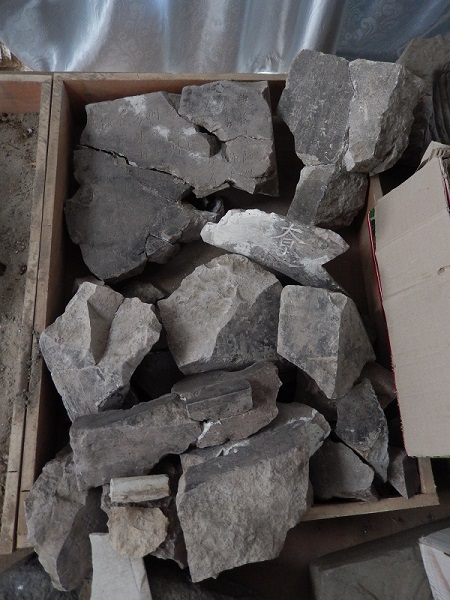
One object in particular catches my attention, a turtle stele with a dharani pillar with Khitan Small Script text engraved on it. I have never heard of a dharani pillar inscribed with Khitan script, and the turtle base looks as if it was made yesterday, so I am greatly relieved when the museum owner assures me that this is not a genuine piece.
Dharani pillar with fake Khitan small script inscription
The upstairs exhibition hall is almost finished, with cabinets of ceramics around the walls, and in the middle an impressive wooden coffin with a tiger painted along its side.
Coffin with tiger painting
But what interests us most is an array of stone epitaphs at the back of the hall. Among these is one that stands out from all the others. This is a square stone table engraved with Khitan Small Script. There is no information card for it, but we later find out that this is the epitaph for Hudujin Shenmi (胡睹堇審密). Unfortunately most of the inscription is illegible in my photograph, but at least we have finally got to see in person our first (and last) Khitan epitaph of the trip.
Khitan Small Script epitaph for Hudujin Shenmi
Rubbing of the epitaph for Hudujin Shenmi
Qìdān Yízhēn 契丹遺珍 [Treasures from the collection of the Khitan Museum] (Beijing, 2011) p. 233
Stone Carvings Exhibition
On the way out of the Khitan Museum by the side door we happen to notice a large shed at the back of the Liao Shangjing Museum. It appears to be full of monumental stones, and we get there we see that it is a "Stone Carvings Exhibition" (石刻文物展), housing dharani pillars, steles, statues, sarcophagi, architectural fittings, and tools for processing grain, as well as bicycles and motorbikes for the museum staff. We would never have seen this exhibition if we had not been to the Khitan Museum, and I suspect that its existence is not currently advertised by the museum.
Stone Carvings Exhibition and Bicycle Shed
The exhibition shed houses an impressive collection of seven dharani pillars (called jīngchuáng 經幢 in Chinese) from various sites in Bairin Left Banner. Unlike the brand new Khitan small script dharani pillar we saw half an hour earlier in the Khitan Museum, these all seem to be genuine, and most or all of them them appear to date to the Liao or Jin dynasty.
| Liao dynasty dharani pillar dated 1110 with Sanskrit dharani | |
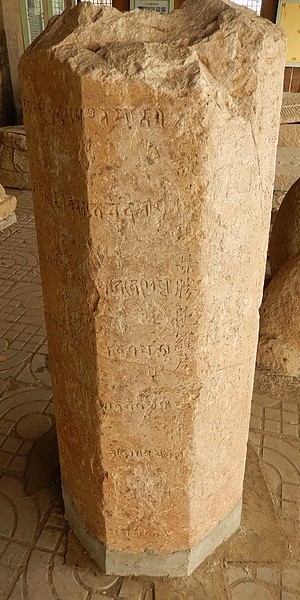 |
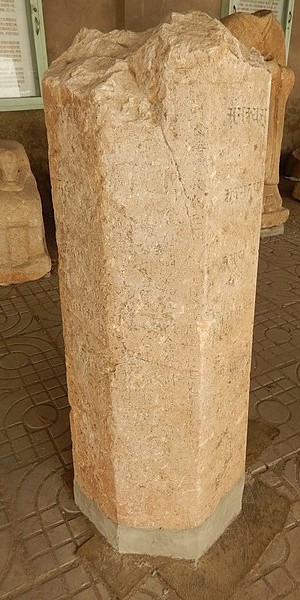 |
| {BabelStone CC BY-SA 3.0} | |
|
Faces 1 and 8 of a dharani pillar from Yunmen Temple on Pingding Mountain in Bairin Left Banner, dated the 17th day of the 3rd month of the 10th year of the Qiantong era of the Liao dynasty (7 April 1110). Engraved with the Dharani of the Victorious Buddha-Crown (Uṣṇīṣa-vijaya-dhāraṇī) written in Sanskrit. 佛説佛頂尊勝陁羅尼 乾統十年龍庚寅三月己亥朔十七日乙卯水巽時建 平頂山雲門寺宗伯講經律論傳法梵學沙門顯瑛書 |
|
Liao dynasty dharani pillar dated 1109 with Sanskrit dharani
Dharani pillar erected at Kaihua Temple on the 3rd day of the 10th month of the 9th year of the Qiantong era (28 October 1109), found at the Front Zhao Temple (前召庙), situated about 12 km south of Lindong. The names of eight men and women who subscribed to the erection of this pillar are also noted on the same face as the date.
特建石䃥子壹座 僧蘊崇 李阿劉 男孫沙 麂郭郎 法化女 清漢 興聖 最連
乾統九年己丑午時十月三日上京開化寺僧書普□□
Precariously balanced dharani pillar with mismatched sections
Dharani pillar, also from the Front Zhao Temple, with Chinese inscriptions for the Lightning Kings of the four directions (四方電王) on the lower section and relief engravings of Budhist figures on the upper section. The small pillar on the left also has inscriptions for the Lightning Kings of the four directions.
Dharani pillar with the top part leaning at a jaunty angle
The main octagonal section had been broken into many pieces and has been reassembled for display. It is inscribed with the "Consecration of the Infallible Lasso Vairocana Dharani" (不空羂索毗盧遮那佛大灌頂光陁羅尼) in Chinese characters. The peculiar forms of some of the Chinese characters strongly suggests that it dates to the Liao dynasty.
At the far end of the exhibition shed is a collection of twelve Liao and Jin dynasty stone cinerary coffins that have been found in Bairin Left Banner. In Liao and Jin China cinerary coffins, wooden cinerary caskets, and pottery cinerary urns for the brial of cremated remains are usually associated with Buddhist monks and devout Buddhist laypeople, and of the cinerary coffins, caskets and urns on display in the Liao Shangjing Museum were found at either the Buddhist cemetery on North Hill or the Buddhist cemetery on the east slope of the hill of the South Pagoda. One of the stone coffins found at North Hill (but I am not sure which one it is in the photo) was found with a wooden cinarary casket inside with an inscription in ink dating it to the 10th day of the 9th year of the 4th year of the Mingchang era of the Jin dynasty (6 October 1193). Many of the other wooden cinerary caskets and casket boards on display in the museum also have ink inscriptions giving the name of the deceased and/or the date of death or burial.
Liao and Jin dynasty stone cinerary coffins
| Cinerary urns found at the North Hill cemetery | |
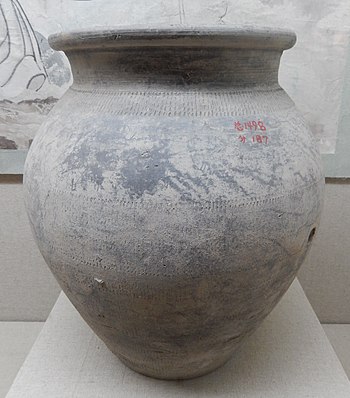 |
 |
| {BabelStone CC BY-SA 3.0} | |
Cinerary urn found at the South Pagoda Hill cemetery
Cinerary casket from the North Hill cemetery
Cinerary casket from the South Pagoda Hill cemetery
Cinerary casket dated 28th day of the 4th month of the 1st year of the Tianqing era of the Liao dynasty (6 June 1111) for the monk Jixing of Kaiwu Temple
天慶元年四月二十八日
開悟寺前開龍别𧵤沙門積行
Cinerary casket board from Wangjing Hill
Cinerary casket board dated 2nd day of the 6th month of the 3rd year of the Da'an era of the Liao dynasty (4 July 1087) for an official named Gao in the Office of Salt and Iron
鹽鐵司高知事
大安三年六月二日記
| Cinerary casket boards for Buddhist monks | |
 |
 |
| {BabelStone CC BY-SA 3.0} | |
|
Cinerary casket board dated 30th day of the 3rd month of the 2nd year of the Dakang era of the Liao dynasty (5 May 1076) for the monk Hongjue of Hongfa Temple 弘法寺前管内都僧録弘覺大師賜紫沙門釋 大康二年三月三十日掩閉記 |
Cinerary casket board dated 20th day of the 10th month of the 8th year of the Dakang era of the Liao dynasty (12 November 1082) for the monk Shanren of Baoji Temple 大康八年十月廿日三[?] 寶積寺首座沙門善忍灰襯匣[?] |
| Cinerary casket boards for laypeople | |
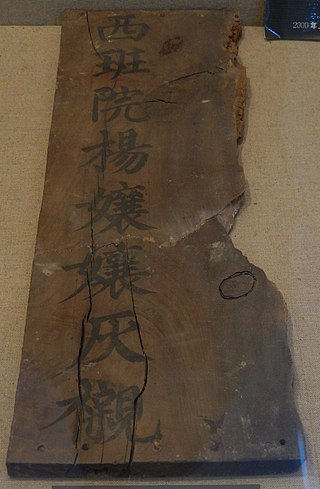 |
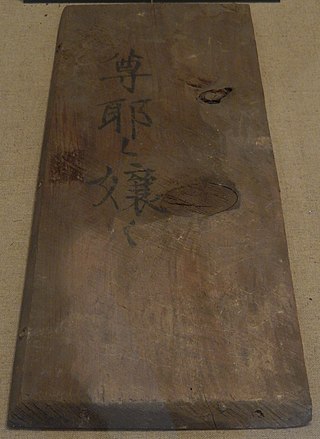 |
| {BabelStone CC BY-SA 3.0} | |
|
Cinerary casket board dated 2nd day of the [?] month of the 2nd year of the Shouchang era of the Liao dynasty (1096) for Mistress Yang 西班院楊孃孃灰襯 (right side) 維壽昌二年□□二日記 (left side) 南無阿彌陀佛 (lid) |
Liao dynasty cinerary casket board for "revered father and mother" 尊耶々孃々 |
| Cinerary casket boards for laypeople | |
 |
 |
| {BabelStone CC BY-SA 3.0} | |
|
Cinerary casket board dated 14th day of the 9th month of the 1st year of the Shouchang era of the Liao dynasty (14 October 1095) for Li Kui and his wife 壽昌元年九月十四日巽時葬二儀五鸞兩殿閤門李逵并妻 |
Liao dynasty cinerary casket board for a lay Buddhist called Zhao who died aged 46, and his second wife who died aged 42 趙氏靈柩永記 舍人年四十六歲於當年六月九日身故 二嫂年四十二歲於當年二月二十九日身故 |
South Pagoda
Before we visit the site of the Liao capital we decide to take a look at Lindong's two Liao dynasty pagodas, a large octagonal pagoda on a hill about four kilometres south of the centre of the Khitan city, and a smaller hexagonal pagoda on a hill less than a kilometre from the north wall of the Liao city. We take a taxi to the south pagoda, and arrive at midday just as the overcast sky turns to torrential rain and lightning. I manage a couple of photographs of the pagoda at a distance, but it is too dark to take any good photos of the pagoda close-up or photos of the decorative features and sculptures on the sides. I am forced to retreat to the taxi where my companions are waiting before I get too wet, and leave dissatisfied.
Lindong South Pagoda in bad weather
North Pagoda
When we arrive back in town it has stopped raining, and the sky is starting to show some blue patches. The North Pagoda is in the middle of the town, reached along an alley climbing up the hill. The sides of the hill are mostly built over with residential housing, but the crown of the hill has been left as an untidy and in parts overgrow park, with a path circumambulating the pagoda. The pagoda has six sides, which is quite unusual, and five stories. It was thoroughly renovated in about 1990, and none of the pristine grey brickwork that we see today is original. There is a false door on the south face, but no other decoration. Like so many renovated pagodas in China, it lacks authenticity.
Lindong North Pagoda
Liao Shangjing Site
Finally, in the afternoon we walk down to the site of the Liao Superior Capital, which is huge and almost entirely empty except for a road cutting through at an angle. It looks desolate and barren, and it is very hard to imagine the temples, pagodas, palaces, government buildings, grand mansions, humble dwellings, busy streets and bustling markets that once filled this vast space. Nothing survives above ground other than the remains of the mud walls surrounding the main city.
Fragment of a stone monument inscribed with the words "Superior Capital"
As we make our way towards the centre of the site we see a red flag waving in the distance, and signs of activity. When get closer we see that the flag has the words "Liao Superior Capital Archaeological Team" (辽上京考古队) written on it, and this is the site of an archaeological excavation. In fact, it seems that there is an annual dig at the site, and this year they are excavating the south gate of the palace. The arachaeological site is fenced off, and as we are considering our options a 4×4 drives up to the site entrance, and an Indiana Jones figure, replete with the hat, jumps out. After introductions, the chief archaeologist (as he turns out to be) very kindly offers to show us around the site (but no photography allowed).
Archaeological dig at the Liao Superior Capital
There are piles of masonry from this season's excavation, and all the blocks of masonry seem to have distinctive ridges on one side, which our archaeologist explains are a diagnostic feature of Liao and Jin dynasty masonry.
Piece of Liao or Jin masonry on the ground at the Liao Superior Capital
Looking south towards the South Pagoda
Now that the weather has improved I am determined to pay another visit to the South Pagoda if I get a chance.
Lindong Revisited [2017-10-01]
Little did I suspect when I visited Inner Mongolia last year, for the first time since I first came to China in 1984, that this year I would again make a trip to Inner Mongolia, and would also spend a day in Lindong, revisiting the Liao Superior Capital and the North Pagoda.
Dharani pillars | Historical sites | Inner Mongolia | Khitan | Liao dynasty | Museums | Pagodas
Index of Rambling Antiquarian Blog Posts
Rambling Antiquarian on Google Maps
